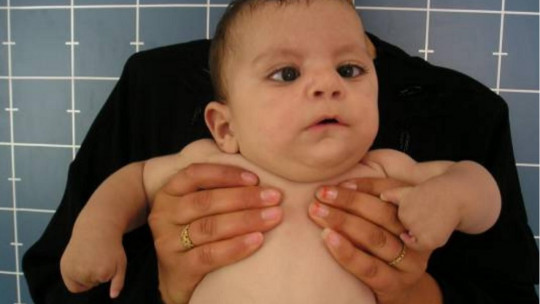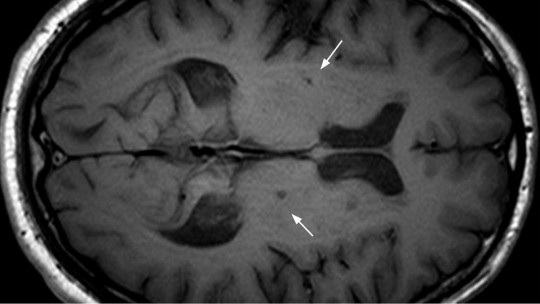Communication disorders include disorders such as dyslalia, stuttering, and phonological disorder, better known as dysarthria. The basic sign that leads to the diagnosis of dysarthria is the presence of marked difficulty in articulating phonemes properly due to muscle problems.
In this article we will describe The causes and symptoms of the main types of dysarthria. We will also briefly explain what the most common treatments for this disorder consist of.
What is dysarthria?
Dysarthria is a disorder that affects the speech muscles: the lips, tongue, vocal cords and/or diaphragm. Difficulty controlling these muscles or their weakness means that people with dysarthria cannot correctly articulate phonemes, so they have pronunciation problems or speak more slowly than normal. Unlike motor aphasia, it is an alteration of pronunciation and not language.
The term “dysarthria” comes from Greek and can be literally translated “articulatory malfunction.” It is a speech disorder and not a language disorder; This means that the problem does not occur at a cognitive level but in later phases of sound production. When the person is completely unable to articulate sounds we speak of anarthria.
The DSM-IV includes dysarthria under the label “Phonological disorder” while in the DSM-5 it is called “Speech Sound Disorder.” The basic criterion for diagnosis according to these classifications is that the person is unable to produce phonemes that they would be expected to have learned to articulate at a certain age.
Causes of this disorder
Dysarthria can have many different causes. Among the most common are alterations of the nervous system, such as lesions and tumors in the brain or strokes that paralyze the face or tongue. When it occurs from birth it is usually a consequence of cerebral palsy or muscular dystrophy.
Certain alterations favor the appearance of dysarthria symptoms in adulthood, such as amyotrophic lateral sclerosis or Parkinson’s, Huntington’s and Wilson’s diseases. Some drugs can also cause dysarthria, especially sedatives and strong narcotics; In these cases, stopping consumption relieves the disorder.
Symptoms and signs
The symptoms and signs of this disorder can vary depending on the cause and type of dysarthria. Among the most common we find the following:
In relation to pronunciation difficulties, four main types of errors are usually detected: substitution, omission, insertion and distortion. Substitution, consisting of replacing the correct phoneme with an incorrect one, is the most frequent, especially when pronouncing “d” or “g” instead of “r”.
While consonant articulation is affected in all cases of dysarthria, improper pronunciation of vowels is considered an indicator of severity.
Types of dysarthria
The types of dysarthria that we will see in this section differ between them mainly in the location of the lesion at the level of the central nervous system.
1. Spastic
spastic dysarthria is due to lesions in the pyramidal tracts related to fine motor control of the muscles of the face and neck.
In this type of dysphasia, hypernasality and sudden increases in speech volume occur. Vocalization tends to be tense and forced.
2. Ataxic
Lesions in the cerebellum cause ataxic dysarthria, the most characteristic signs of which are presence of flat, monotonous prosody and slow vocalization and uncoordinated, similar to that which occurs in a state of drunkenness. The typical speech of this type of dysarthria has sometimes been described as “explosive.”
3. Flaccid
In this type of dysarthria the vagus nerve is affected which allows the movement of the larynx and therefore the vocal cords. Dysfunctions also occur in other facial muscles.
In cases of flaccid dysarthria the muscles can atrophy or become partially paralyzed, causing spasms, drooling and muscle tension.
4. Hyperkinetics
Hyperkinetic dysarthria is usually caused by lesions in the basal ganglia, subcortical structures involved in involuntary movements.
The symptoms of this type of dysarthria are similar to those of spastic dysarthria: the voice tends to have a harsh quality and hypernasality also occurs.
5. Hypokinetic
In general, hypokinetic dysarthria appears as a consequence of Parkinson’s disease although it is also common for the cause to be the continued consumption of antipsychotic medications.
In this case the volume is usually very low, the timbre is flat and the prosody is monotonous. The reduction in the speed of movements caused by damage to the region known as the substantia nigra explains these symptoms.
6. Mixed
This category is used when the clinical features are a combination of more than one of the types of dysarthria we have described. Mixed dysarthrias are due to effects on different motor systems.
Treatment and intervention
The treatment of dysarthria depends largely on the alteration that causes the disorder since, when possible, correcting the ultimate cause eliminates the symptoms. However, there are interventions to improve speech in cases where the underlying problem cannot be modified.
The main objectives of the speech therapy and language therapy In cases of dysarthria, they are strengthening the muscles involved in speech, improving breathing, achieving adequate pronunciation and facilitating communication between the affected person and those close to them.
In cases where speech impairment is severe, external supports, such as voice synthesizers and alphabet boards, are very useful. Learning gestures and even sign language It can also serve to a certain extent to compensate for the communication deficits typical of dysarthria.











